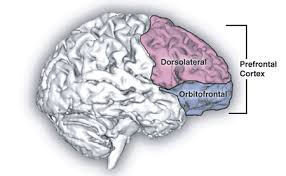“Don’t do alcohol or marijuana until you’re 25.”
If Magistrate Judge James E. Seibert has one piece of advice for teens, that is it.
With the caveat … “And then, only in moderation.”
When he speaks to students, mostly high school age — and he will whenever someone invites him — he begins with this:
“I have good news, and I have bad news. The good news is that 10 years from now, one of you will be in federal prison for selling heroin, but you will be alive. The bad news is one of you will be dead from a heroin overdose.’”
 In 2017, 72,000 people in America died of drug overdose. In 2017, 49,000 people died of opioid overdoses, he pointed out. From 1999 to 2006, heroin deaths stayed at about 2,000 a year. But then in 2013, they jumped to 8,000 (nationwide), he said. West Virginia, in 2015, led the nation in overdoses per 100,000, at 41.5. The national average is 16.3, he noted. In 2016, West Virginia was again on top with 52 deaths per 100,000, with the national average at 19.8, according to the Centers for Disease Control and Prevention. Also in the top five were Ohio with 39.1 deaths per 100,000 and Pennsylvania with 37.9 per 100,000.
In 2017, 72,000 people in America died of drug overdose. In 2017, 49,000 people died of opioid overdoses, he pointed out. From 1999 to 2006, heroin deaths stayed at about 2,000 a year. But then in 2013, they jumped to 8,000 (nationwide), he said. West Virginia, in 2015, led the nation in overdoses per 100,000, at 41.5. The national average is 16.3, he noted. In 2016, West Virginia was again on top with 52 deaths per 100,000, with the national average at 19.8, according to the Centers for Disease Control and Prevention. Also in the top five were Ohio with 39.1 deaths per 100,000 and Pennsylvania with 37.9 per 100,000.
“Do you know how everybody was upset this year in that horrible tragedy in Parkland, Fla., when 17 young people died, and how horrible it was and how much the news media dwelled on that? 197 people died every day in 2017 from drug overdoses. 134 people died every day from opioid overdoses. So where is the problem that should most concern us? I’m not trying to minimize the horrible tragedy at Parkland. I’m trying to emphasize where we need to look as a country,” he said.
His years as magistrate in the U.S. District Court, Northern District of W.Va., has convinced him that early use of marijuana and alcohol leads many young persons astray.
“When defendants come in front of me and most of them have no criminal record and are released, and I tell them that is the only chance they get from me, I couldn’t understand why a majority of those keep coming back with violations or using drugs, and that’s when I started investigating about prefrontal cortex and brain development.
“And I’m now convinced that a lot of those people simply cannot make that judgment. It’s not only addiction, it’s also the ability to know right from wrong, ability to use judgment.
“The government who lets you drive at 16 doesn’t understand. The government that lets you join the army at 18 doesn’t understand. The government that lets you drink alcohol at 21 doesn’t understand. Car rental people are the only people that understand because they won’t rent you a car if you’re under 25. They understand brain development,” Judge Seibert said, referencing an article on brain development from the Massachusetts Institute of Technology.
According to that MIT study, “Growing evidence points to the serious impact of chronic substance abuse on young adult development. Recent research is demonstrating ways in which alcohol and other drugs affect the growing brain, causing damage that may or may not be possible to repair.
“The human brain does not reach full maturity until at least the mid-20s,” the study adds.
He has more science to back up his passionate convictions.
 According to the National Institute on Drug Abuse in an article on Drugs and the Brain (2018), “The prefrontal cortex powers the ability to think, plan, solve problems, make decisions and exert self-control over impulses. This is also the last part of the brain to mature, making teens most vulnerable. Shifting balance between this circuit and the reward and stress circuits of the basal ganglia and extended amygdala make a person with a substance use disorder seek the drug compulsively with reduced impulse control.”
According to the National Institute on Drug Abuse in an article on Drugs and the Brain (2018), “The prefrontal cortex powers the ability to think, plan, solve problems, make decisions and exert self-control over impulses. This is also the last part of the brain to mature, making teens most vulnerable. Shifting balance between this circuit and the reward and stress circuits of the basal ganglia and extended amygdala make a person with a substance use disorder seek the drug compulsively with reduced impulse control.”
And according to an article by Ken C. Winters and Amelia Arria from the U.S. National Library of Medicine National Institute of Health, “Research now suggests that the human brain is still maturing during the adolescent years. The developing brain may help explain why adolescents sometimes make decisions that are risky and can lead to safety or health concerns, including unique vulnerabilities to drug abuse. This new science can be useful in revising prevention strategies to be more effective.”
Sitting at his desk, surrounded by packing boxes — Judge Seibert retires today, Aug. 31, after 33 years as a practicing attorney and federal magistrate — he recalls his first heroin case in 2003.
“Seven defendants. They all went to prison. They all got out. Two died of heroin overdoses after they got out,” he recalled.
Since 2003, he’s seen more than his share of drug cases.
“Here’s where my proof comes from,” he shared. He reads the pre-trial release reports. One section of those reports relates to substance abuse, “and almost all in that section say: started using marijuana and alcohol at 13, 14 or 15. That’s what leads me to the conclusions that I’ve made.”
He also strongly believes that early use of alcohol and marijuana leads to further drug use. “It absolutely leads to further drug use … two reasons. Number one, it puts you in the drug environment, and number two, you don’t have the judgment not to use. Those are the two reasons. And anybody who says differently is a liar or a fool.”
And clearly, he believes, it’s the amount you do that affects the outcome of your life.
“If you have a drink once a month or smoke a joint once a month, it’s different from doing it on a daily basis. Having said that, what the effect on you when you’re 13 is a hell of a lot different than when you’re 21 because of the status of your brain, your prefrontal cortex.”
The father of three and grandfather of three is also concerned with the marijuana of today — it’s not your father’s or your grandfather’s marijuana.
“The thing that angers me the most is the young people who say, ‘you old people have your drug of choice, alcohol, and you want to deny us our drug of choice, marijuana.’ My answer is, ‘if I get a beer I know it is 3.5 percent alcohol. If I get wine, I know it has eight or nine percent alcohol. If I get gin, I know it has a higher percentage of alcohol — but it’s regulated and it’s done.
“There is no regulation of marijuana any place … in Colorado the average THC content (the primary psychoactive chemical in marijuana — what gets you high) is like 20 percent, and if it’s homegrown, it’s 35 percent. When you were young, THC content of marijuana was five percent. Then they started making BC Gold which was hydroponically grown marijuana in British Columbia — everybody loved it; it was 10 percent THC. You can go on the Internet now and buy DABS, that have 70 to 90 percent THC.
“The average THC content in the last decade was 10 percent. The Colorado average was 18.7 percent; the home retail pot was 30 percent,” he said citing a 2015 Colorado study.
“We are raising a nation of zombies,” he said, adamantly.
“My major point is that early use of alcohol and marijuana, particularly before age 16, is destroying our young people, number one. And it is making their brains such that it’s very difficult for them to have a chance to overcome their addiction, and which will ultimately lead to their death.
“… I feel passionate about it.”
Opioid addiction does not only happen to strangers in his life. While he may not know the defendants, often he is acquainted with parents and grandparents of those who come before him in court.
“I do not comprehend this: most of the drug defendants in federal court are from lower socioeconomic groups, usually with one-parent homes, with, I would say, not much chance in life. Opioid defendants are from middle and upper socioeconomic groups, from two-parent homes, from parents who try to point them in the right direction. They’re a group that I would describe as having every chance in life, and I don’t get it. I don’t get it.
“These aren’t things I make up. These are things I see every day. And it scares me.”
And here’s something else scary. “Faces of Addiction.” He shows — especially younger kids — before and after pictures of drug addiction.
Continuing his speech to the high school kids, he says: “And you know which one of you is going to be in prison and which one of you is going to die of an overdose? I’ll make it very easy. You know who among you is using alcohol and marijuana, and I want you to go home tonight and get on your favorite search engine and put in [the words] marijuana, alcohol, prefrontal cortex, National Institute of Mental Health. The science is pretty well settled now that the prefrontal cortex, the front part of our brain, is the last to develop. It is not fully developed until age 25. The science is pretty clear that the earlier you use marijuana and alcohol, the more interference there will be with the prefrontal cortex development. So look around you, and those who are using marijuana and alcohol at the early age will be the ones who will go to prison or die.”
What is the effect his talks have on the kids?
“I don’t know,” he says. “… I don’t know if it’s worthwhile or not, but my theory is if I‘ve just saved one kid, it was worth my time.”
Sources:
- Young Adult Development Project, MIT
- Adolescent Brain Development and Drugs, Ken C. Winters and Amelia Arria
- Colorado Marijuana Study Finds Legal Weed Contains Potent THC Level
• After nearly 38 years as reporter, bureau chief, lifestyles editor and managing editor at The Times Leader, and design editor at The Intelligencer and Wheeling News-Register, Phyllis Sigal has joined Weelunk as managing editor. She lives in Wheeling with her husband Bruce Wheeler. Along with their two children, son-in-law and two grandchildren, food, wine, travel, theater and music are close to their hearts.


